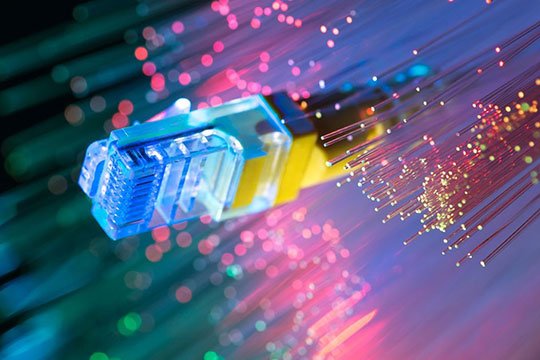The concerns over the future of the Earth are growing with each passing day due to the damage we are doing to the environment. We all should be looking out for ways to improve our habits, be more sustainable and protect the environment, for we are taking it for granted. One of the surprising ways by which you can help protect the environment is your internet connection.
The internet network inside your home might not be damaging to the environment but when taking into record millions of households across the world, there is always more at play than what is happening within your home.
It is estimated that the internet produces about 300 million tonnes of carbon waste every year that has a huge impact on the environment and is negatively affecting the environment. One way by which you can help the environment is to switch to the Fiber Internet if it is possible since it has been known to be a more environmentally friendly option than conventional internet services. Let’s have a closer look at How Fiber Internet is The Key To a Sustainable Internet?
What is Fiber Internet?
If you are not familiar with Fiber Internet then it operates through the use of fiber optic cable. These cables run separately throughout the neighborhoods and then reach your house to an ONT or Optical Network Terminal Box. An ONT Box is just like your modem but it is smaller in size and it functions just like a modem, bringing the internet signal to your home. It functions just like your modem and you can access its settings through the default gateway address i.e 192.168.0.1 or 192.168.1.1.
Fiber optic uses a very thin type of cable and it is very powerful in transmitting the information and signals uninterruptedly & Fiber Optic cables can carry more information per mile as compared to copper wires.
Fiber is the latest technology of the internet network and as compared to previous technologies, it is a greener alternative. A cable network uses the same cable connections as a television set whereas a DSL makes use of phone lines but Fiber is different from these old frameworks and it uses the technology efficiently and effortlessly to have a minimal impact on the environment.
Primary Impacts of Fiber Internet
Fiber networks require fewer materials than older frameworks such as DSL or cable internet. Both Cable Internet and DSL make use of Copper Wire for data transmission across the internet whereas Fiber cables contain strands of glass fibers inside an insulated casing.
Copper mining has been known to be very harmful to the environment and by getting rid of copper cables, you will be reducing your overall carbon footprint on the environment.
When it comes to sustainability against natural elements then fiber optic is more sustainable than copper wires. When there are powerful thunderstorms that can wipe out thousands of DSL and Cable Connections, Fiber internet will hardly be affected by it.
Fiber Requires less energy for data transmission as compared to copper wires and since it requires less energy, it does need to be cooled to the extent of copper wires meaning that there would be a few air conditioning units to keep the whole system of fiber network cool and running.
The biggest advantage for customers is that fiber cables are capable of transmitting the information much faster than copper wires and they don’t suffer frequent disconnectivity issues as occurs with copper wire connections. Compared to copper wires, fiber optic cables provide higher bandwidth and transmit data over longer distances.
Secondary Impacts of Fiber Internet
Beyond the primary impacts of fiber internet, there are also several secondary impacts with the biggest being it rarely requires any kind of repair. Fiber cables are made of hard material and they rarely require any sort of repairs and even if they do require a repair, repairs are usually fewer and require fewer people for the job. Fiber Internet reports are done up to 70% faster than copper wire equivalents.
Additionally, another secondary impact is that copper wires cannot keep up with the increasing demands of increased bandwidth and require additional wires to be installed to increase the speed of the internet whereas, fiber internet can keep up with the increasing demands of the users and maintains its speeds without the need to have any additional wires installed.
How to Get Started With Fiber Internet?
To get started with fiber internet, you will need to make sure that it is available in your area since it is currently being installed in different towns but the availability is increasing because of the increasing demand.
A fiber internet does not require a modem since it uses an ONT box but to transmit signals wirelessly, you will still require a wireless router.
Fiber Internet is just one of the ways by which you can try to reduce your carbon footprint and try to live a sustainable life. As more people will switch over to this technology, the impact will be substantial.























